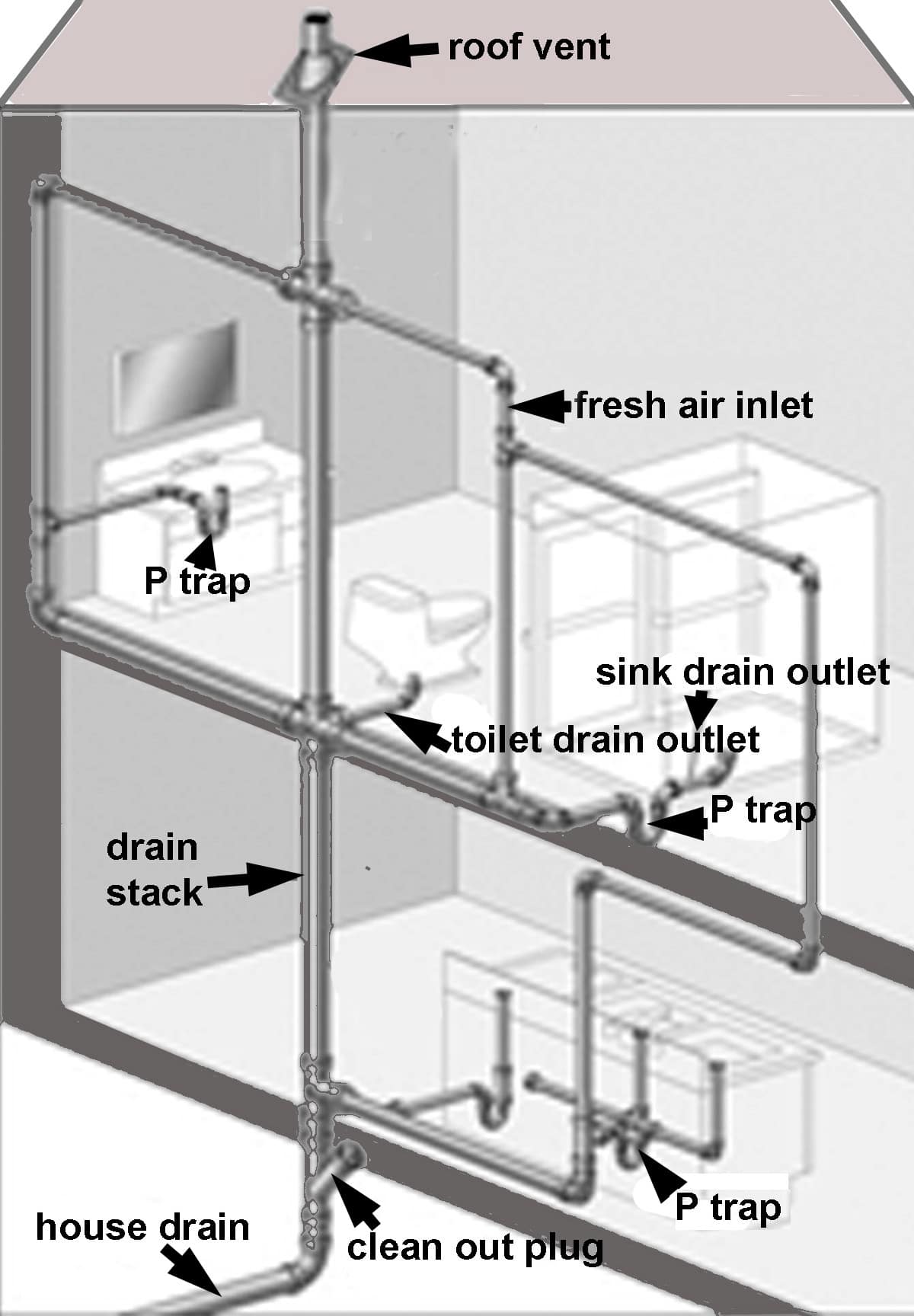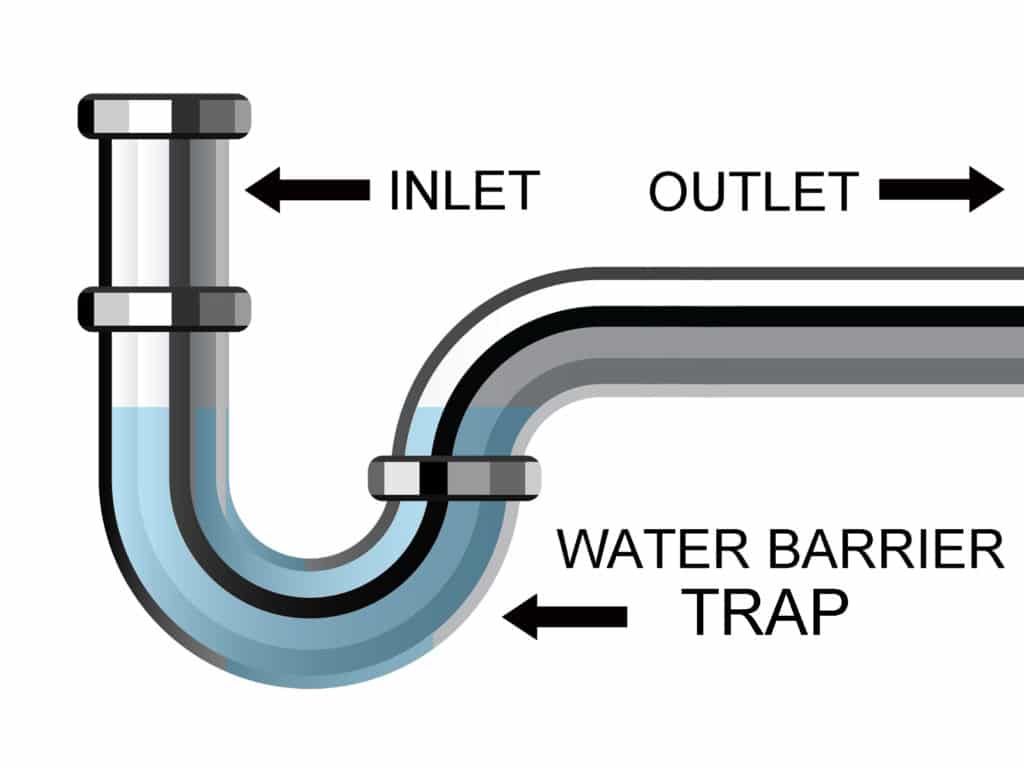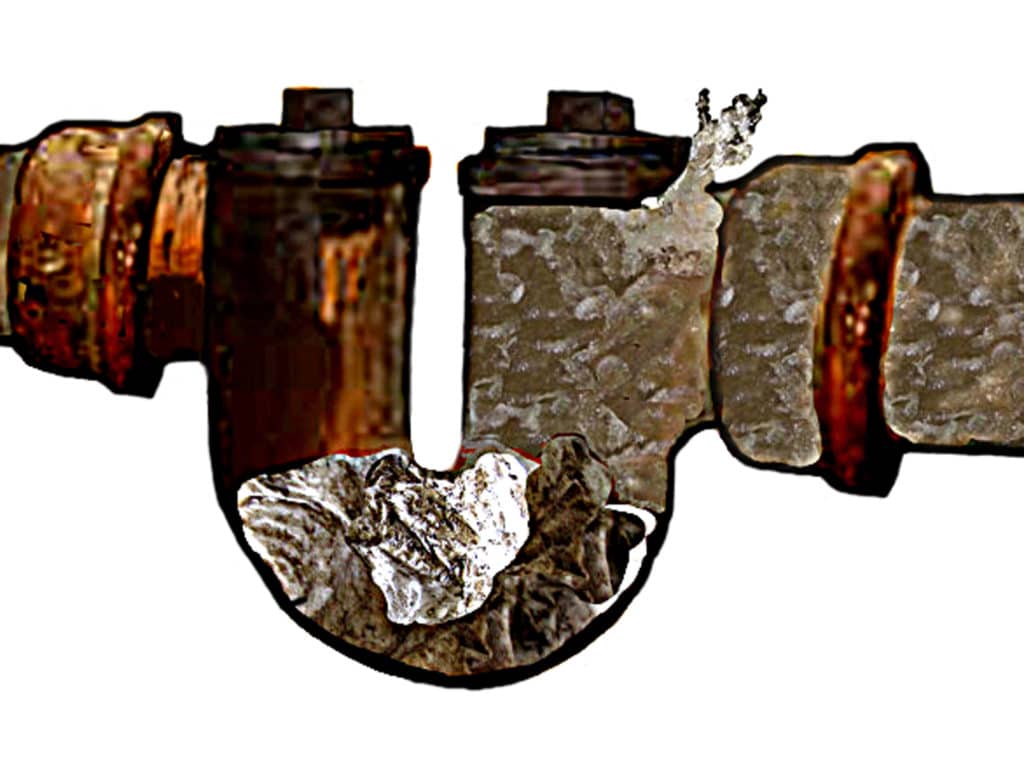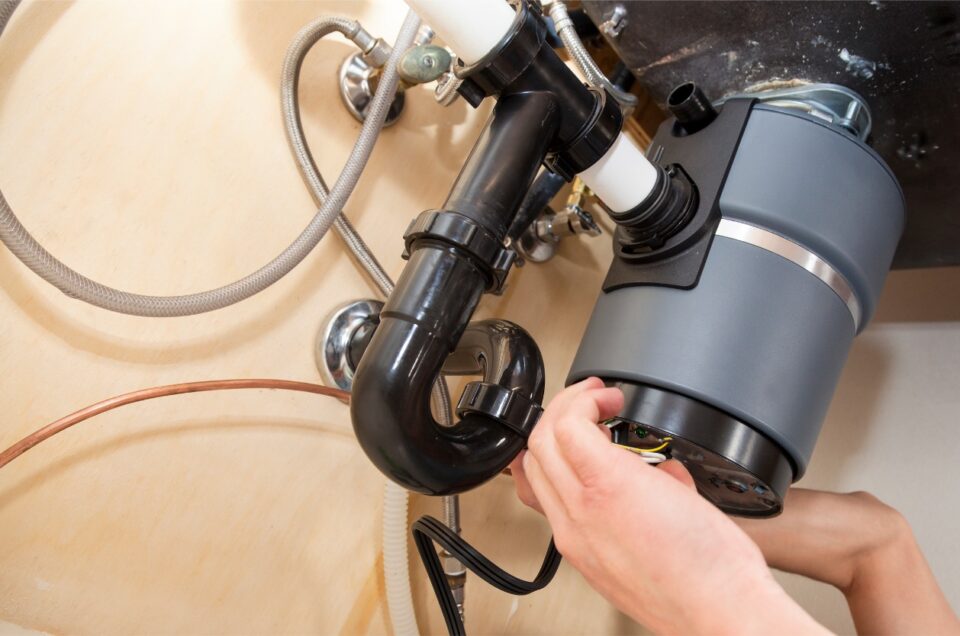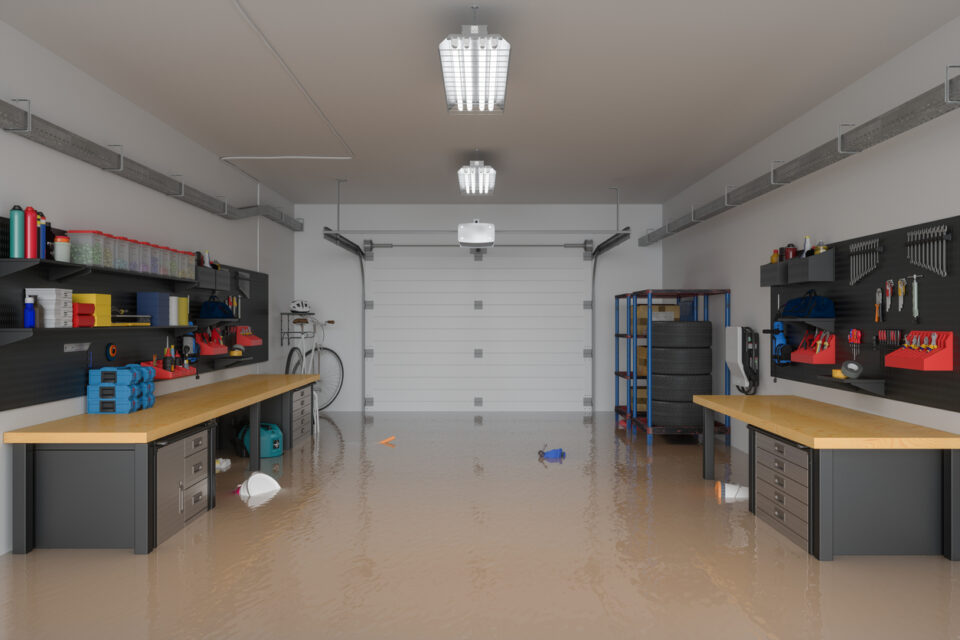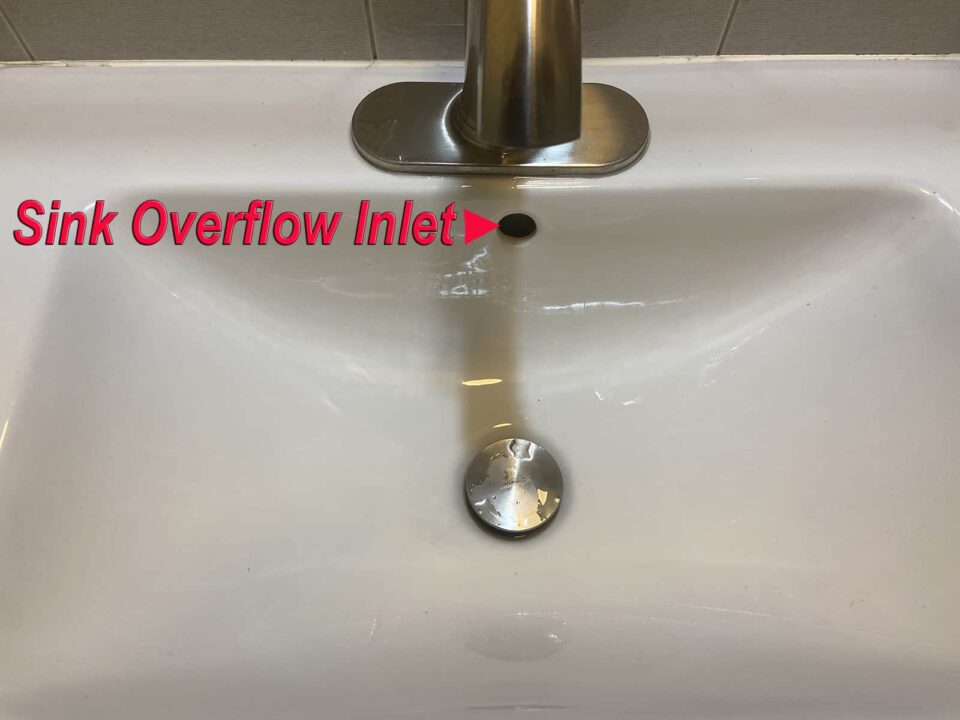The importance of sewer drain traps in your home plumbing cannot be overstated. You rely on a proper drain system installed in your house to get rid of your wastewater. You use it daily, but you do not exactly understand how it works. When you flush wastewater down the sink, toilet, and shower, you expect it to disappear.
Your drains carry the sewage away following the direction of the drain pipe. While this is not entirely wrong, there is just a little bit more involved in the mechanism. In addition to a network of pipes in which the wastewater flows, every drain system has several sewer traps, some also connect to a vent pipe.
As a homeowner knowing about your sewer traps can come in quite handy. Traps prevent clogs, allow for cleaning of clogs, and prevent sewer gases from entering a building or your living space. Sewer traps come in various sizes, shapes, and materials. Working on a trap incorrectly, or the wrong trap, can cause damage, or serve no purpose in solving a drain issue.
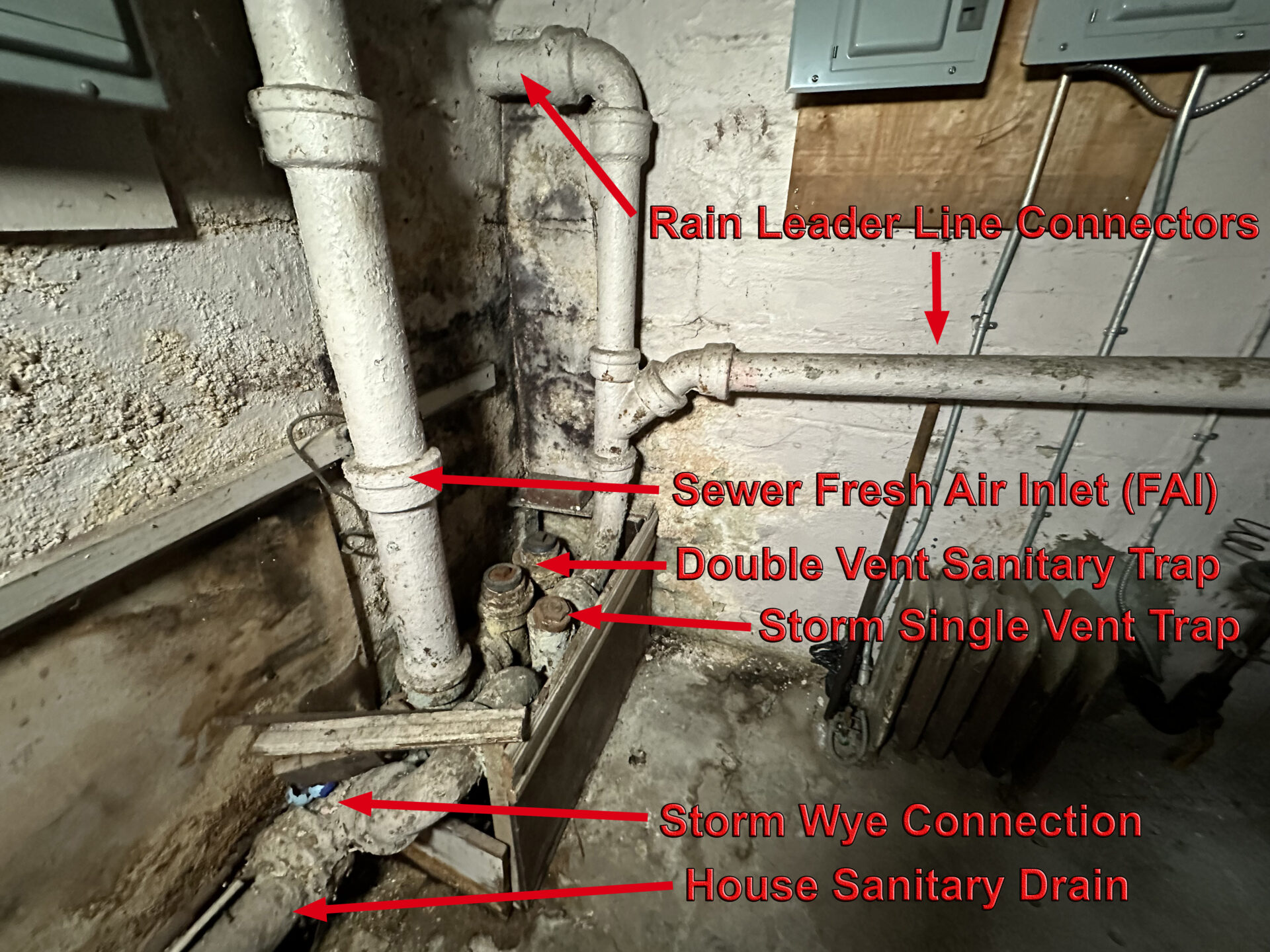
Why is every plumbing fixture designed to be trapped?
Each drain line and plumbing fixture is connected to a sewer trap. Among other things, sewer traps prevent toxic gases contained in wastewater, the public sewer, or septic tanks from escaping and entering your house. A sewer trap gets its name from the way it works: it traps a small volume of water between your plumbing fixture and drain line. This standing water functions as a barrier through which no sewer gas can penetrate.
Another important part of a drain system is the vent or “vacuum breaker” that provides a passage of air as wastewater flows down the drain after it passes through the sewer trap. This allows wastewater to flow freely, without creating a vacuum.
The importance of venting all drain traps
An absence of a vacuum is crucial to allow for a steady, quiet, and quick flow of wastewater. Whether your plumbing system is connected to a private sewer treatment facility (septic tank) or city sewer line, sewage leaves your house in three simple steps:
- Wastewater collected in sinks, showers, toilets, and other fixtures enters the drain pipe
- Before it goes to the main drain line, wastewater must flow through a sewer trap
- Sewage enters the wastewater treatment facility; in the process, standing water in a sewer trap also flows along the sewage, but is replaced with a new volume of water flushed down from the fixtures used.
How vent lines are designed and installed
To make sure that wastewater flows freely, the vent pipe acts as an air passageway into the drain line. Vent pipe is installed vertically, in a way that the pipe protrudes from the roof in most cases. The vent for a main house sewer usually exits through an exterior wall a few feet above the trap itself.
While the pipe allows the escape of gases from wastewater, these gases are immediately absorbed by the atmosphere and neutralized. They do not re-enter the house through the vent pipe. As long as the pipe is tall enough, sewer odor problems are negligible in most cases. Some people fit a filtration system (carbon filter) to the vent pipe to minimize the bad smell outside of the house.
If you are unable to find your main sewer trap, look for the vent outlet. The vent outlet (technically referred to as a f.a.i., fresh air inlet) is usually on an outside exterior wall. It will be covered by a vent plate. In some cases, it exits up from a finished surface and has a “U” bend. Main drain traps should be directly in front of where the vent connects to your house drain. In some cases, people mistakenly cover or cement over their house trap.
As the water flows down the main drain line, air is sucked into the pipe to prevent a vacuum. To visualize the purpose, imagine drinking out of a bottle of water without letting any air back into the bottle. The water will not flow smoothly, if at all. Important to note that a vent pipe must be installed or connected to the drain line after the sewer trap, not before it. Such a design allows multiple sewer traps (one under every water fixture) to connect to a single vent pipe in a house.
There are several types of sewer and drain traps as follows
Understanding drain traps and the various types can prevent you from mistakenly working on the wrong drain line, misdiagnosing a problem, or causing damage.
- Single-vent sewer trap
An obsolete type and no longer considered effective for sanitary systems. In NYC, this type does not comply with building codes for sanitary lines. Single vent traps are typically found on storm drains, area drains, or rain leader lines. If you’ve uncovered a single vent trap, it is probably not for a sanitary waste drain.
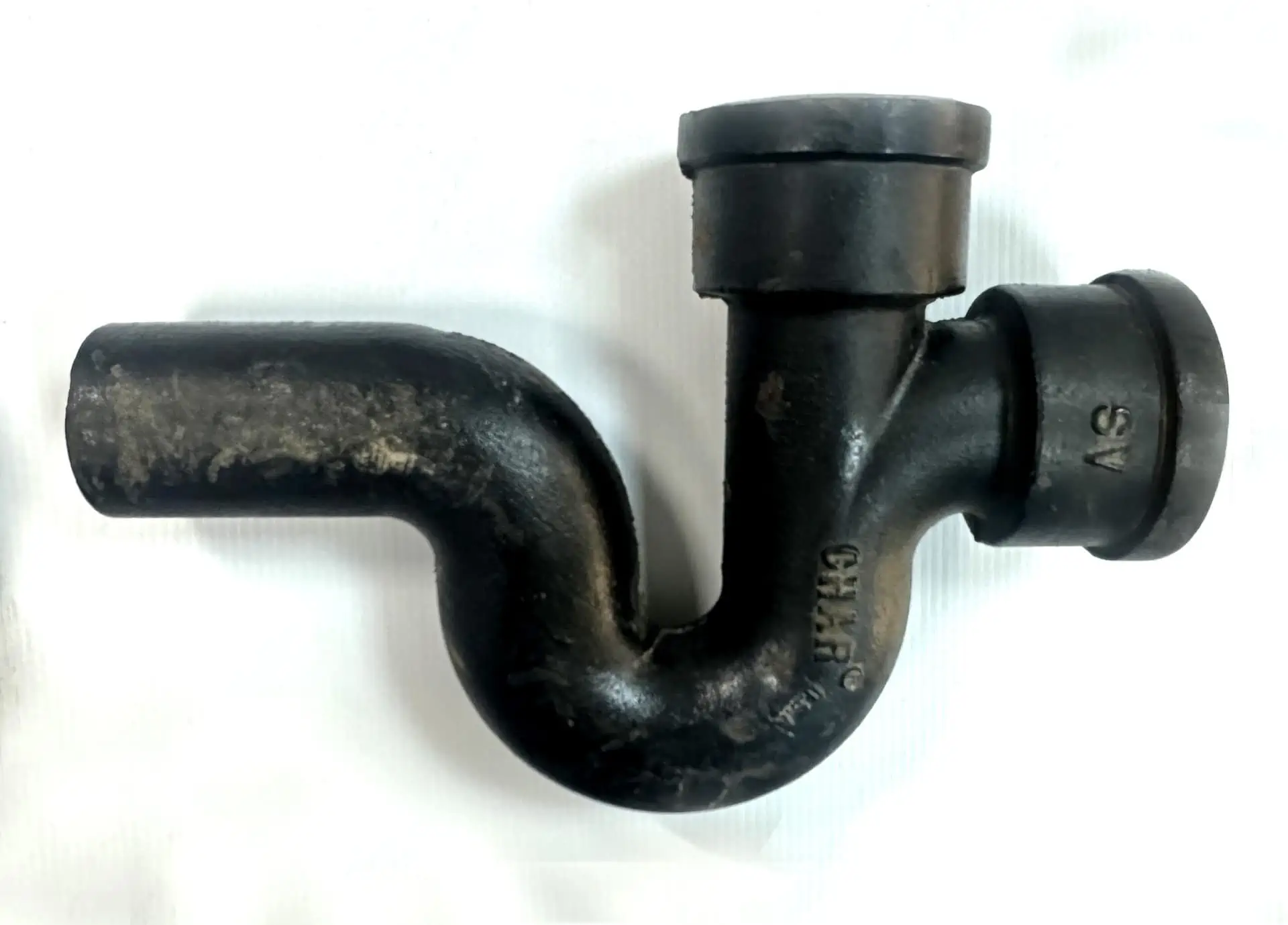
- Double-vent sewer trap
A double vent trap has two outlets to your drain pipes. This allows for easy cleaning. One clean-out connection is toward the public sewer (or septic system), and another is to your interior house drain. Most main house traps in NYC are 4″, for some large buildings they may be 6″.
If you uncover a drain trap that is smaller than 4″, it is not the trap for your sanitary main house sewer. Many times a storm trap is mistaken for a main sanitary house trap. This can result in misdiagnosis, failure to clear a simple clog, or a completely unnecessary sewer repair.
- P Drain Traps
The simplest, most widely used, and arguably the most effective dedicated sewer traps are P-traps. They do not offer any dedicated connection to a venting pipe, but adding a vent is easy (and should be a requirement). A P-trap should be under every one of your sinks, toilets, tubs, and showers. For these smaller fixtures, it prevent articles or objects from entering your main drain. Of course, they also keep a water barrier from odors entering your living space.
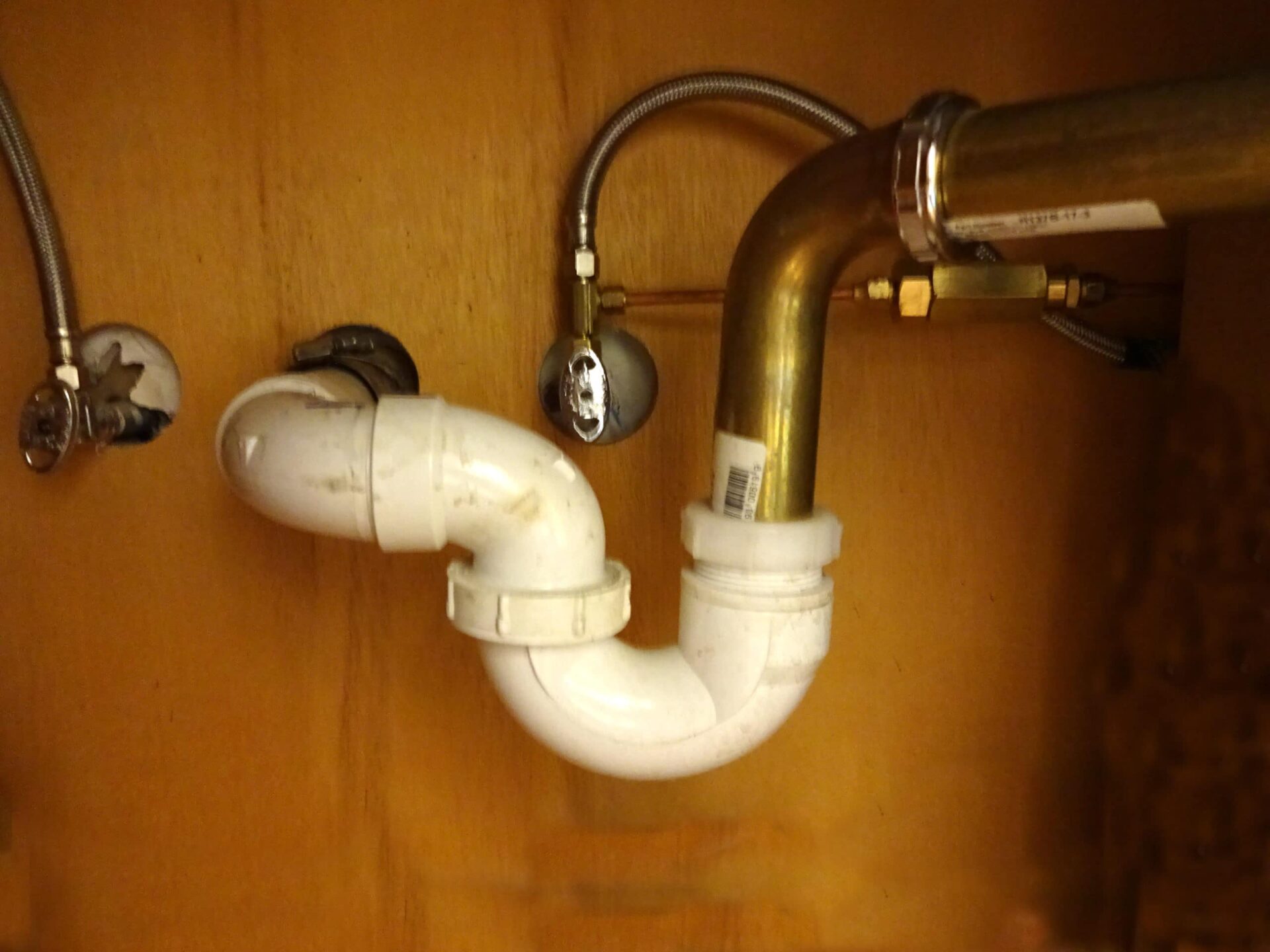
Size or diameter of a sewer trap
The size of a trap is determined based on the diameter of the main drain line. As a rule of thumb, no sewer trap outlet can be larger or smaller than the fixture drain to which the trap is connected. For example, you cannot connect a 3-inch trap to a fixture drain with a 2-inch drain pipe diameter. These are some common sizes and types of sewer traps used in residential plumbing installations:
- Double-vent 4-inch Sewer Traps
Connected to the main house drain and house sewer. Typically the house sewer itself becomes a size larger downstream from the flow of waste water. This means most NYC house sewers are 6″. In Manhattan most house sewers are 8″
- Double-Vent (or Single-Vent) 3-inch Trap
Connected to a storm sewer, rain leader lines, area drains, etc. But not for a sanitary sewer. never expect to clear a waste clog from out of a 3″ trap.
- P-trap
Drain traps can also be stand-alone (no built-in connection to vent) trap was installed underneath the plumbing fixtures. P-traps for individuals can range in size from 2″ to 4″. In some cases, they will have a removable plug on the bottom for cleaning. Sediment and debris can accumulate on the bottom of a P-trap.
Sewer traps can have a variety of different types of trap covers or plugs. Each needs a different type of tool to remove it. Many times old plugs or caps have to be replaced, but that is an inexpensive item.
Another little bit about proper venting
A major part of a Drain-Waste-Vent (DWV) system is the main vent stack (this is the main vent pipe) that runs vertically through the roof and is connected to multiple fixtures. Many water fixtures that cannot connect directly to the main stack can use a recent line or secondary stack that extends to the main vent pipe.
It is very important that your vent lines stay clear and free for airflow. So never cut and cap a vent line. In addition, make sure they are clear. They are a favorite place for birds to build a nest, due to the flow of nice warm air.
Water fixtures that use P-traps are often connected to the main stack through a recent. It is worth mentioning that some fixtures, such as a water closet, have a built-in sewer trap so there is no need to fit an external trap to it. This actually will prevent sewage from going down to the main drain line. As a matter of fact, no plumbing fixture should be fitted to more than one trap, this would be a code violation as well.
Double-Vent Sewer Trap
In a combined wastewater system, both storm drain and sanitary drain are connected to one discharge pipe that carries wastewater to a treatment facility. That means there will be two traps in one pit, one may even be higher than the other. In some cases, the lower trap may even have become buried. In the event of clogging, you need to clean the sanitary sewer trap instead of the storm trap; fixing the wrong part will not solve the problem. A sanitary sewer is often located lower than a storm sewer – an inexperienced plumber can easily mistake one for the other.
- Never open a main house trap unless you are 100% sure the public sewer is not backed up. Homeowners routinely open their trap and then witness a backed-up public sewer empty into their basement. If your neighbors are also having backups, it just may be a public sewer backup.
- Always open the street side cleanout plug 1st. That way if it is a trap clog, the water can flow over the top of the trap, and out through to your main sewer line. Otherwise, you will be flooded with all the backed-up waste in your drain system.
In the event of clogging in a double-vent sewer trap, you must open the right accesses (caps that cover the vents) of the trap in the right order to prevent unexpected flow of raw sewage into your house. The street side or part that goes to the wastewater treatment facility is opened first and then you can open the house side or the section that connects to house plumbing; that way, the clogged water will have a way out of the trap in a less-annoying way.
When sewer traps need service or you need expert advice
Of course, there are many variables involved in a clogged sewer trap situation. Clogging may happen due to simple problems such as the accumulation of dirt, improper sloping, incorrect vent installation, broken pipe, or a broken sewer trap itself. Only trust a professional plumber to do a thorough inspection and perform the necessary repairs.
In case sewer traps need a replacement, professional plumbers have the knowledge and experience to work with that specific part of plumbing and they will only use the correct tools for the job to prevent further damage. Contact the Balkan Drain Team for expert advice, fast on-site visits, or expert service.


